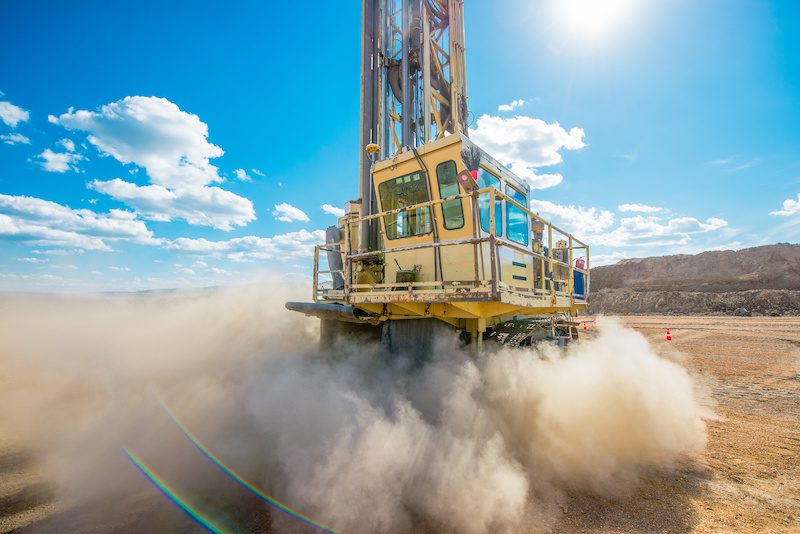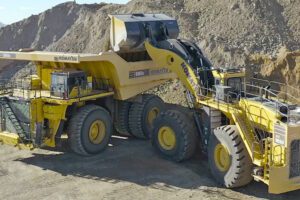A real-time dust monitoring solution has shown significant benefits over conventional monitoring methodologies. The Air XD from UK detection and electronic systems manufacturer Trolex uses optical particle counting technology to dynamically count and size airborne particulate in real time. The instantaneous reading benefits over conventional dust monitoring techniques when control techniques are being implemented. Conventional methods typically only give total exposure over a fixed monitoring period after that exposure has occurred.

The key benefit for process monitoring is that, because the data is time-stamped and has a very high temporal resolution (down to 10 seconds), it can be used to link raised levels of respirable particulate to a particular activity or process.
The challenges of real-time dust monitoring
Data shown in this report is taken from an Air XD trial at a mineral processing site. This site refines and packages crystalline silica sized between 1 micron and ~ 50 microns. This process can generate respirable crystalline silica (RCS) both as a byproduct of the milling process and as a finished product due the size of milled silica needed by their customers.
READ RELATED CONTENT
- Most accurate digital hygrometer
- Intrinsically safe air powered purifying respirator
- Smart mining helmet set to revolutionise safety in mining
Air XD is used by this customer to enable them to monitor the milling process, in turn helping them identify losses from the process that can be corrected, reducing overall exposure for their workers. They have multiple vertical mills with increasingly fine silica produced at different levels of the mills. Air XD units are placed alongside the mills on five levels to monitor exposure in different areas and to allow them to identify the location of any leaks.
What was the Air XD used for?
The examples are given in this report highlight two areas where the customer was able to gather valuable data about their process using the Air XD. The first is an example of a process improvement/correction highlighted by the data provided by the Air XD and the second shows the benefits to occupational health monitoring of real-time data.
It is worth noting that this data was gathered using an Air XD general purpose particulate monitor so we cannot distinguish between RCS and any other particulate. Due to a good understanding of the environment and processes at the plant, it was safe to assume that most of the particulate matter in the environment was RCS. This enabled the Air XD to be tuned to the specific environment using the proprietary Trolex environmental database. This, in turn, enabled a higher level of accuracy to be obtained from the data and more realistic conclusions to be drawn.
What was found after deploying the Air XD?
The examples below show live particulate matter (PM) readings gathered alongside the silica milling process during a 24-hour period. Plots show data for PM10, PM4.25, PM2.5 and PM1. These refer to particles with diameters in different size bands. PM10 is equivalent to the particulate that would be captured by a 10 µm filter in gravimetric sampling, PM4.25 a 4.25 µm filter etc.
These are useful as PM10 is commonly used for environmental monitoring. PM4.25 is defined in standard ISO 77081 as the inhaled airborne material that penetrates to the lower gas exchange region of the lung and therefore has the potential to cause the most harm. Most UK legislation requires the monitoring of PM10 exposure.
Minerals Processing – Example 1
This example shows the benefit of being able to correlate the real-time particulate monitoring data to the milling process. The data shows sustained raised levels of particulate from midnight until 3 am and from 2 pm until 7 pm. This corresponds to the times that the mill was in operation, the company operate 24 hours a day with two shifts.
What benefits did the Air XD provide?
One of the benefits of the Air XD is that it provides time-stamped data with high temporal resolution. This was useful in the example above as it highlighted that high particulate matter concentrations were present in the air after the machinery was turned off at the end of a shift. This was found to be due to the fact that the extraction system for the mill shut off before the mill had finished spinning down releasing a cloud of dust into the area. This was quickly resolved by altering the mill program so that the extraction stayed on for 15 minutes after the mill was shut down.
What was the result?
The important result is that a conventional monitoring sample gathered between 6 am (the start of the shift) and 2pm would have detected exposure below the legal limit. The live signal, however, shows that in reality there were several events that caused particle levels to spike well above that level.
More importantly, the 15-minute average shows sustained levels above the legal limit around these spikes leading to much greater exposure for anyone around the process at that time. As in the previous example these spikes were linked to certain parts of the milling process so that appropriate action can be taken.
Glyn Jones, Group CEO of Trolex, says: “The monitoring of hazardous particles in the workplace is mostly self-regulated with reports being submitted to the Health and Safety Executive on an intermittent basis.
“The real risk lies in the fact that those responsible for monitoring hazardous environments don’t have access to real-time accurate information. This vulnerability in the data potentially leaves workers exposed to hazardous particles that can cause illness later in life. In some cases, even death.
“The Air X series will provide industrial organisations with a far better understanding of what is going on in their work environments. For the first time they can use live, accurate data to ensure safety standards remain at the highest levels at all times.”
Trolex Air XD Real-Time Dust Monitor
The Air XD Real-Time Dust Monitor uses lab-grade precision laser technology to continuously measure particulates of multiple sizes in harsh and hazardous environments.
IECEx certified and five times more accurate than the industry standard model, the Air XD Real-Time Dust Monitor offers unparalleled accuracy and reliability. Using a unique algorithm, the device can measure particulate matter (PM) sizes ranging from 0.35µm – 40µm (including PM1.0, PM2.5, PM4.25, PM10 and Total Suspended Particles) and captures up to 10,000 samples every second.
The Air XD Real-Time Dust Monitor provides:
*Instant measurement of particulate matter sizes between 0.35µm – 40µm
*Accurate to within +/-5% compared to +/-25% of current industry standard models
*Sophisticated, algorithm captures up to 10,000 particulates per second
*Reliable open flow device with no pumps or filters
Deployment, installation and configuration of the unit is simple, just mount the device and turn it on. Once the system checks are complete, the device will begin logging data. The Air XD also comes with a bespoke software package for data visualisation and analysis; live readings, historic data and graphs can be viewed or downloaded via the software.
Deployed as a standalone dust monitor or as part of a wider on-demand dust control and suppression system, the Air XD is accurate to within +/- 5%. For operation-wide control and visibility, data from the unit can be fed into a SCADA interface.
The unit is simple, lightweight and durable, and contains no pumps or filters meaning ultra-high reliability and incredibly low maintenance, reducing the overall total cost of ownership.
The Air XD Real-Time Dust Monitor is IECEx certified for Group I hazardous locations in underground mines and there is also provided a general-purpose variant for use in industrial locations with non-explosive atmospheres.
Read more Mining Safety News














Add Comment